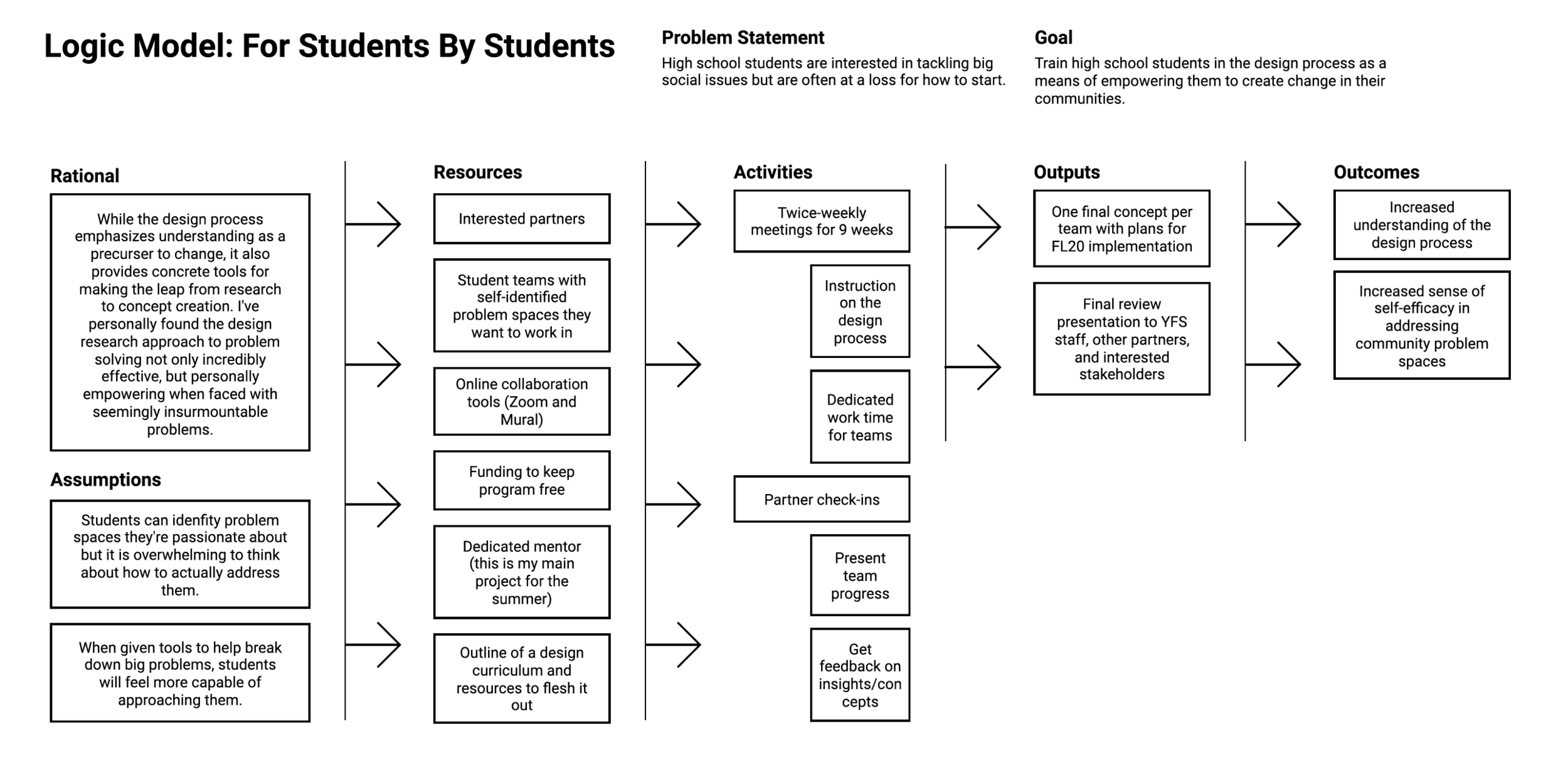
For Students By Students
How might we empower high school students to create change in their communities?
LOCATION: Remote based in Mercer Island, WA
SKILLS: Project Management, Teaching, Mentoring, Community Engagement
TIMEFRAME: June 2020 - August 2020 (3 months)
ROLES: Educator, Mentor, Project Manager
AUDIENCE: Gephardt Institute Civic Scholars, Mercer Island Youth and Family Services
CONTEXT:
I knew high school students had the passion and interest to develop large-scale change in their communities and I believed that with a design research toolkit, they could bring their ideas to life. With this in mind and Covid-19 reminding me to rely on existing connections in communities I was already a part of for my independent summer project as part of the Gephardt Institute Civic Scholars program, I created a virtual summer program for high school youth looking to make change in their communities. The teams investigated questions regarding mental health and stress among their peers at Mercer Island High School, a public school just outside of Seattle, WA.
DELIVERABLES:
I developed a 9-week curriculum for teaching the design research process to students at Mercer Island High School. Student insights were passed along to Mercer Island Youth and Family Services and each team presented tested prototypes for addressing each original “how might we” question. They plan to implement these concepts in Fall 2020. I also had students complete a pre-post test to track their understanding of the design process as well as feelings of self-efficacy in addressing community problem spaces.
REFLECTION AND PROJECT OVERVIEW:
PROJECT PLANNING:
I spent my junior year discussing different models of civic engagement and reflecting on why design mattered to me as part of the Gephardt Institute Civic Scholars program at WashU. As part of the program, I developed the below logic model and started the process of creating a 9-week design program I called “For Students By Students.”
Civic Scholars Cohort Engagement
Discussed civic engagement frameworks and models at meetings with other students planning their own Civic Summers
Wrote reflections and logic model to help outline hopes and plans for the summer
Relationship Building
Created website with information on programming to recruit student teams
Established partnership with Mercer Island Youth and Family Services (MIYFS)
SCOPING AND CURRICULUM DEVELOPMENT:
The teams identified the mental and emotional wellbeing of students at their school as an overarching topic to explore. Through meetings with them and a counselor in the district, each team chose a question to focus on for the summer. One team looked at ways students could advocate for themselves and their peers regarding issues of stress and wellbeing while the other team explored ways to better facilitate conversations around mental health. The 9-week curriculum that I developed was a culmination of all my notes, tools, and ideas from three years of experience with Design For America. I created slides and activities for the students to help move from big questions towards actionable concepts they could implement in the fall.
Project Scoping
Led meetings with student teams to identify questions focus on for the summer
Met with high school counselors to help narrow scope in the area of mental and emotional wellbeing
Curriculum Development
Created slides and resources for 9-week design research curriculum
Created five Mural workshops for students
PROJECT IMPLEMENTATION:
Throughout the summer, I met with teams over Zoom for three hours each week for a mix of instruction, workshops, and team work time. The students took the lead on their projects and I acted as a mentor, guiding them through the process and helping coordinate and helped facilitate the logistics of participant recruitment and
Immerse
Introduced design research process
Facilitated activity to have students test assumptions around problem area
Mentored students in creating interview guides and led practice interviews
Led participant recruitment
Synthesize and Reframe
Introduced synthesis techniques and guided students through the process in Mural
Facilitated workshop for students to cluster insights, identify design criteria, and write new “how might we” questions with narrowed scope
Ideate and Prototype
Facilitated ideation session
Mentored students in prioritizing ideas to prototype
Introduced prototyping techniques and guided students through creation of storyboards
Test
Led participant recruitment
Mentored students in identifying assumptions to test
Created testing session guide for students to use as a framework
Led discussion on incorporating feedback into concepts
Present
Provided templates for teams to give presentations to friends, family, and partners on their work this summer
Shared all insights and concepts with MIYFS for possible policy-level implementation









